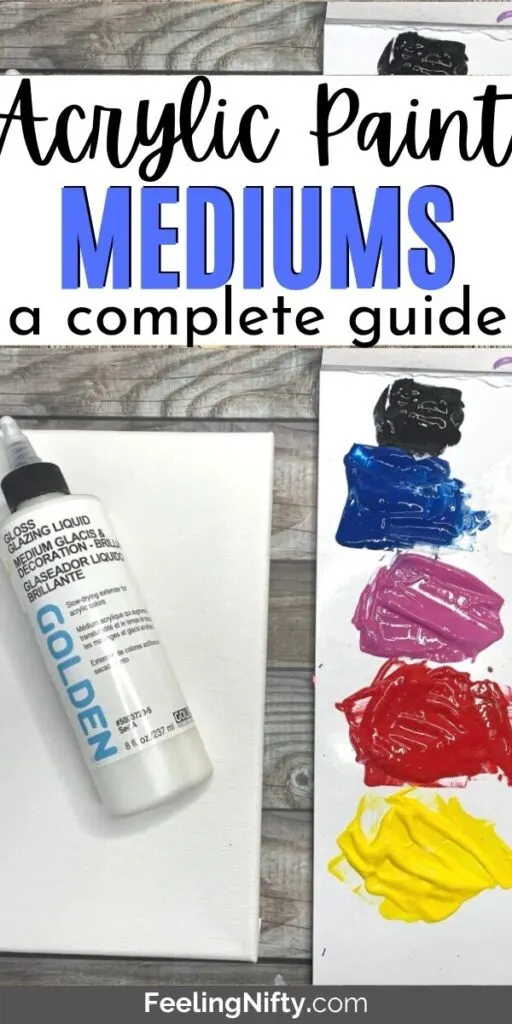If you’re looking to make abstract styled acrylic art or mixed media paintings, then you’ll want to learn about acrylic mediums. Mediums are so much fun to use and can elevate your art process and paintings to spectacular levels. You can use them to add different textures, 3D effects, glossy/matte finishes and even use them to “glue” in or collage in different materials. There are endless ways to play, create and paint using mediums, which can help you paint some great things.
If you want to learn more about acrylic painting you can check out this acrylic painting ultimate guide or this acrylic painting tips post that are both great resources when first starting out with acrylic paints.

What Are Acrylic Mediums
So what are acrylic mediums, you may be asking?
They’re gels, pastes and mediums that can be used on their own or mix directly in with your acrylic paints for extending drying time (open time) to thickening, glazing, collaging and to get a variety of beautiful textures and properties out of your acrylics. They can be a great addition to your painting process.
Acrylic mediums contain an acrylic binder- which is the same ingredient that’s found in your acrylic paint- minus the pigment portion.
If you’ve ever looked at an acrylic painting and ever wondered how acrylic painters gets the funky “bumpy” or lifted textures in it, or how they get the glossy/glass like finish, acrylic paint mediums are the answer. They can often help transform paintings from flat pieces to interesting textured pieces of art.
Also, make sure when using mediums you’re using a medium that is made for acrylic paint and not oil paints. You can read the label to find out which type of paint the medium should be used with.
Types of Acrylic Mediums
Acrylic mediums come in a variety of different types and finishes. The type of medium you’ll use will depend on what you want to accomplish in your art. Mediums can be used to thin or thicken acrylic paints, used as a glue in collage work, glazing applications or even to make those trendy fluid pour paintings. Each type of medium can also come in a variety of finishes from gloss, semi-gloss to matte. I’ll go over a variety of mediums in the article below.
In terms of brands, many brands of acrylic paint also have their own collection of acrylic mediums. The 2 brands I have personally used and love is Liquitex and Golden, which are popular among artists.
1. Matte Medium / Matte Gel
Matte medium (also called matte gel by different brands) makes the acrylic paint dry flat without any gloss. You can also use it as glue for collage work for mixed media type paintings. Dries with a matte effect / finish.

2. Gloss Medium
Acrylic gloss medium is used to increase the glossy finish of acrylic paints, add more depth and richness to colors, thins heavier bodied paints, and can also be used as a glue in collaging work.
3. Acrylic Gel Mediums
Gel mediums can be used to create texture, thin down paint for brilliant glazes, extend drying time, and change the finish of acrylics. They come in different consistencies : from extra heavy, heavy, regular and soft gel. Each type of gel also comes in different finishes from gloss, semi-gloss to matte. You can also use gels like a “glue” in mixed media art projects.
Heavy/Extra Heavy Gel
Create a variety of textures with extra heavy gel , which you can mix directly in with your paints. Use this medium to add thick layers of paint onto your surface. The gel is thick in consistency and can hold high peaks even when dried. The result is a lifted 3-D like effect (picture below). Gels are opaque when wet and most of them dry transparent.

Regular Gel Medium
Regular gel medium is the same thickness as heavy bodied acrylics( I.e. thick acrylic paint) . Extend the drying time of acrylics and create some impasto effects with this medium.
Soft Gel Medium
Soft gel medium is thinner in consistency compared to heavy bodied acrylic paints. The thinner consistency can be helpful when wanting to thin down acrylics to create glazes. Create some wet-on-wet blending work or use it as a “glue” for collages in mixed media projects.
4. Pouring Medium
Pouring mediums can be mixed in with acrylics to make them thinner and increase the fluidity of the paints. Artists use this medium to create fluid acrylic / pour paintings with a glass like finish. Read the instructions beforehand as you might have to mix medium and paint in a specific ratio.
5. Modeling Pastes
Use modeling paste to create heavy texture and sculpture-like finishes. You can create impasto techniques with this medium. Dries opaquely. Because of the thickness of the modeling paste it is best to use a palette knife (or similar tool) to apply it on your surface.
6. Retarding Mediums
Retarding medium thins the paint and increases the time to dry. This works well especially if you need the paint to stay “wet” and workable for a longer duration (especially for blending work in portraits and scenery, real-life paintings). A little tricker to use compared to glazing liquid.
7. Glazing Medium
Glazing medium thins paint consistency without affecting pigment. You can use this medium to extend the drying time of acrylics, for glazing, blending, and as a bonus this paint finish has a nice glossy sheen (my personal favorite medium). Unlike paint retarder, you can mix this medium in any ratio and it will extend the working time so that you can blend your paints without them drying out. It works for both thin layers of paint as well as thick layers of paint. The gloss finish also amplifies the acrylic colors so they look more brilliant.
You can check out this video to see how to use this medium to help you with blending work. I used this medium in my how to paint a sunset cityscape tutorial (picture below) which amplified the colors of the sunset.

8. Flow Improver
You can mix Flow improver / flow aid (depending on brand name) in with your acrylic paints to give a smooth finish with less brush strokes due to reduced surface friction. You can increase transparency of the paint color and blending becomes easier when using this medium. One thing to note, is that you’ll need to mix this additive with the acrylic paints in a specific ratio, unlike the mediums above which can be added in any ratio. For best results, read the instructions/labels on the bottle.
9. Gesso
You can use acrylic gesso to prime your canvas so that the paint glides easier over top of it seamlessly. A gessoed canvas makes blending easier and the paint adheres better to the canvas too. It provides an optimal surface for paints and other media ( pastels, pencils, paint markers, etc.). You can apply gesso over dry paint, then you can paint over top of the gesso.
10. Slow-Drying Mediums
You can use a slow drying medium to slow the drying time of acrylics and also to increase transparency. This allows artists to work with their paint for longer (without paints drying out on them) which can be useful with blending work for example.
11. Varnish / Sealer
Varnishes/sealers is another medium that you can use as the final step of your painting. Sealers will protect the paints and mediums used from environmental effects (UV light) and will prevent the paints/mediums from scratching/peeling off. Read more about how to how to stop acrylic paint from washing off objects.
Varnishes also can amplify the color saturation in the paints (especially if you use a high gloss/gloss finish).
Varnishes come in a variety of finishes: gloss, semi-gloss, matte. There are also different formulations like a paint-on and also spray-on. The sprays can be useful when sealing larger pieces. There’s also removable and permanent varnishes also. You can check out this page for more information.
12. Glass Medium
If you want to try painting on glass, then this glass medium can help achieve smooth color application. When cured it dries with a glossy, scratch-resistant finish. Use with surfaces like glass, ceramics and porcelain.
13. Texture Mediums/ Special Effects
Texture mediums / texture gels are great at adding textures, different effects and details to your painting. You can use texture mediums by mixing them into your paints. There is a wide variety of mediums, here are a few popular ones:
Glass Bead Medium
Glass bead medium contains tiny glass beads in it to give some amazing texture to your art. Similar to the other mediums, you can mix glass bead medium can be mixed directly in with acrylic paints. Similar to the pumice gel, except the beads are bigger than the granular pumice. In the painting below I mixed the gel with gold paint (in the diamond portion).
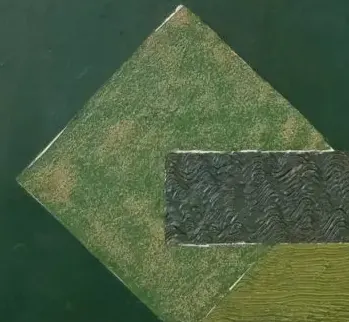
Pumice Gel
Mix this pumice gel medium in with your paints to get a sand like texture that creates a fine, gritty and absorbent surface. Pumice gels come in a variety of types: from extra coarse, coarse pumice gel to fine coarse pumice gels.
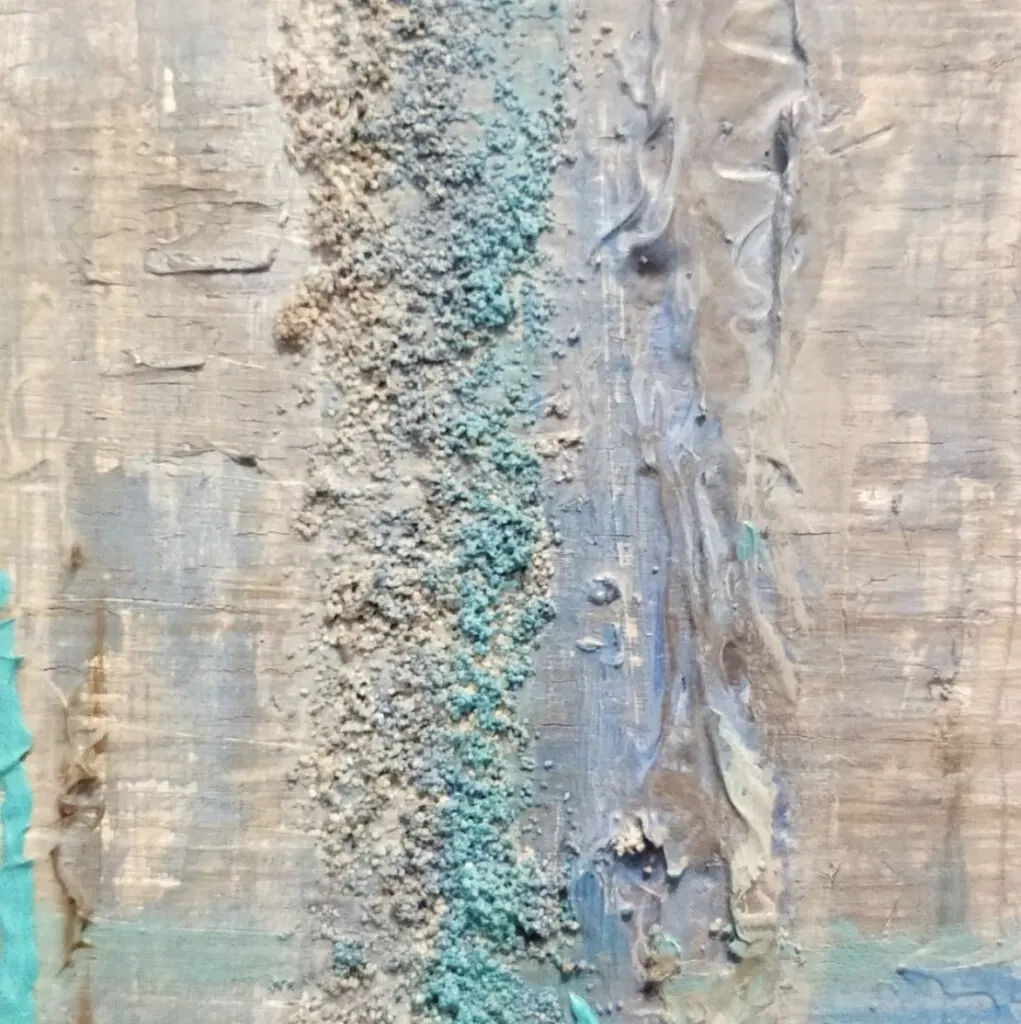
String Gel
Mix the string gel with paint to create long honey-like strings that dry with a of glossy/glass-like effect, wet-look. You can alternatively paint large areas too with the same effect (I.e. the red poppy flowers in the painting below). This adds different sheens/finishes to your art.
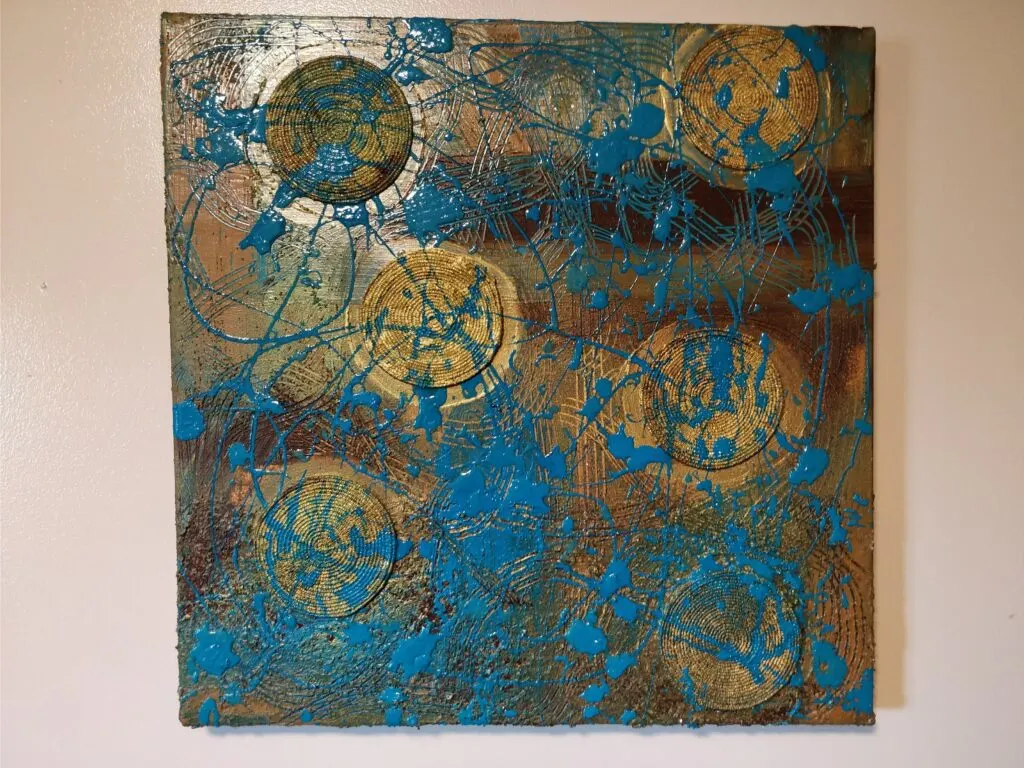

Crackle Paste
Mix this crackle paste medium in with your paint to give a cracked, aged rustic texture, that’s reminiscent of the dry desert floor.

Iridescent Medium
You can mix iridescent medium into the paint to give the paints an iridescent sheen.
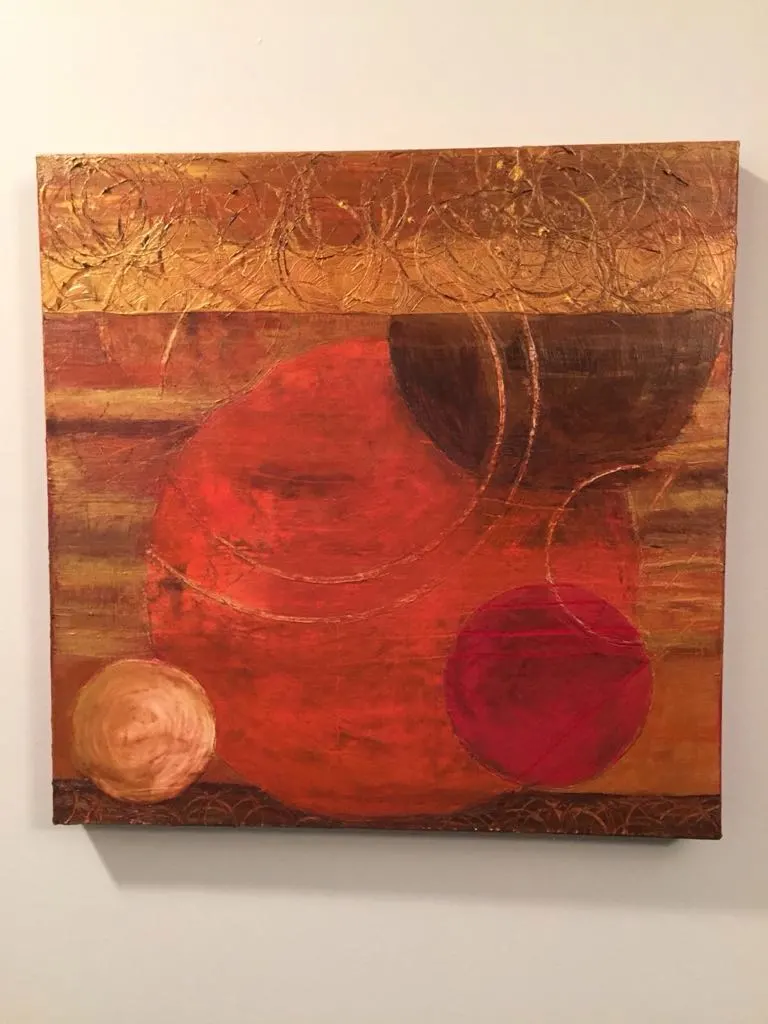
Acrylic Mediums Tips
Below are some tips that can be useful when using acrylic mediums:
- You can mix different brands of acrylic paints with mediums.
- You can use mediums that are meant for acrylic paints and not oil paints.
- If on a budget you can use the DIY texture medium ideas below (using items you already have)
- You can use multiple mediums in one art piece.
- Sealing your painting once your done can protect the medium and paints from peeling/scratching off (see varnishes above).
- To ensure your colors are as vibrant as they can be don’t over-thin the paint with mediums (or water).The more medium/water you use can affect the binder in the paints which can affect the pigment.
- Enjoy mediums they are an amazing part of the art process. They can elevate your painting to new heights and allow you to express yourself in ways you never could before.
Acrylic Mediums: Simple DIY Ideas
Buying a medium can be expensive, so here are some ideas that can both reduce the cost with buying mediums and also simple items you already might have in your home. I’ve used these in my paintings and they work great.
- Broken or crushed up eggshells.
- Salt (big or small grains).
- Glue from a glue gun, or clear school glue can create amazing embossed like textures (see butterfly picture below). You can paint over top the dried glue.
- Water. If you want to thin down your paint without having to buy a glazing liquid you can use water. However, using water might affect the color of the end painting. Mediums are always better to use over water to prevent dull colors, but if that’s not a concern water can be a cheaper more accessible alternative.
- You can use Elmer’s Glue as an alternative to pouring medium.
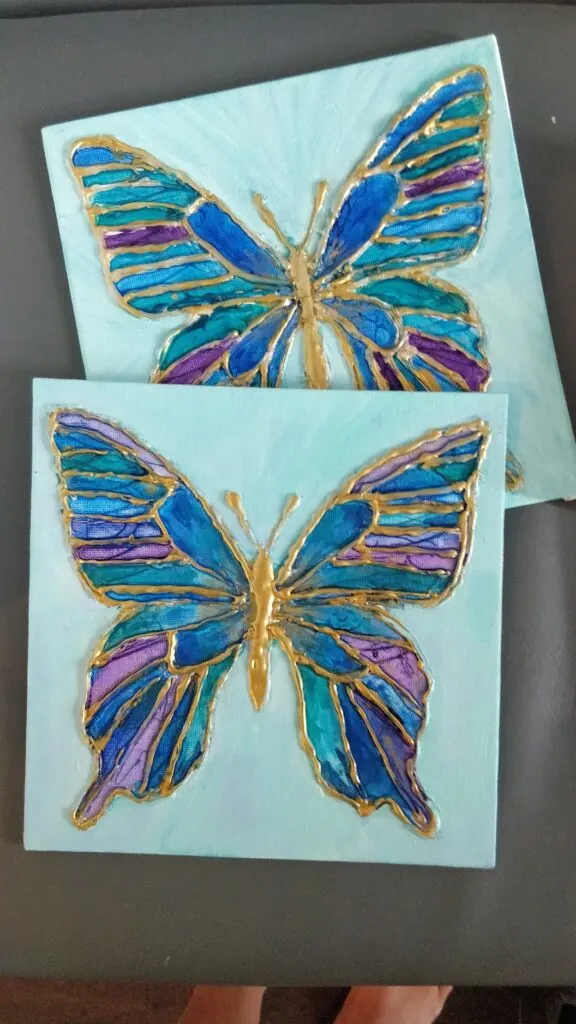
If you liked this acrylic mediums post, please pin it to Pinterest
